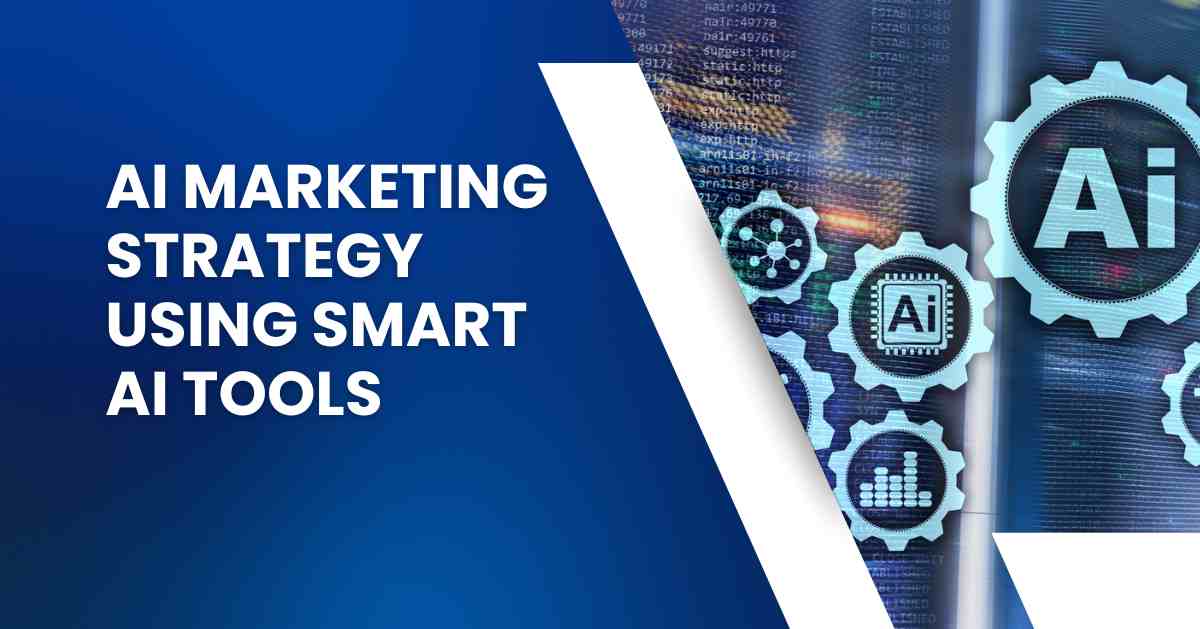Design an AI Marketing Strategy Using Smart AI Tools

Why Designing an AI Marketing Strategy Matters in 2025
The digital marketplace is noisier than ever, and the brands that rise above the din are the ones that design an AI Marketing Strategy around data‑driven insight, speed, and personalization. When you design a Marketing Strategy, you permit algorithms to do the heavy lifting—spotting patterns, predicting intent, and surfacing the right offer at the perfect moment. In short, to compete in 2025, you must design a strategy that puts intelligent automation at the center of every campaign.
Mapping Today’s AI‑Powered Marketing Tools
To design a Strategy, you first need to audit the landscape of AI‑powered marketing tools:
- Predictive analytics engines like Salesforce Einstein and HubSpot’s AI Forecast spot revenue opportunities.
- Generative content tools (ChatGPT, Jasper, Writer) draft emails, ads, and social posts in seconds.
- Customer‑data platforms with embedded AI (Adobe Real‑Time CDP, Segment) stitch journeys together.
- AI-powered social listening tools like Brandwatch Iris and Sprout Social AI can detect changes in public sentiment before they become widespread trends
Selecting the right stack is step one when designing an AI Marketing Strategy because each tool becomes a cog in a seamless, automated flywheel.
[Read About: Blockchain Technology and Digital Marketing ]
Four‑Step Framework to Design an AI Marketing Strategy
Use this proven blueprint to design a Strategy that scales:
- Define outcomes & KPIs – tie revenue, retention, and lifetime value targets directly to AI outputs.
- Enrich first‑party data – clean, structure, and feed it to your models.
- Deploy automation loops – map the customer journey and let marketing automation with AI trigger the next best action.
- Test, learn, iterate – machine learning thrives on rapid feedback; bake experimentation into every sprint.
Follow these four pillars every time you design an AI Marketing Strategy, and you build a system that improves itself.
Checklist (bold italic indicates tactical must‑dos)
- Collect multi‑channel data streams
- Segment audiences dynamically
- Generate creatives with AI
- Score leads in real time
- Automate nurture workflows
Each bullet is a micro‑step toward the overarching goal of designing an AI Marketing Strategy that never stops optimizing.
Marketing Automation with AI: The Engine Room
When marketers design an AI Marketing Strategy, automation becomes the heartbeat:
- Smart scheduling drops posts at the exact minute your audience is active.
- Adaptive bidding lets Google Ads AI adjust CPC in milliseconds.
- With predictive lead routing, leads are directed to the sales representative most likely to secure a conversion.
Make sure your tech stack supports these functions, because without automation, you cannot truly design an AI Marketing Strategy that delivers compound returns.
Personalized Marketing Using AI: One‑to‑One at Scale
Consumers demand hyper‑relevant experiences, and the best way to meet that demand is to design an AI Marketing Strategy that personalizes:
- Product recommendations driven by collaborative filtering
- Personalized subject lines tailored to individual audience segments
- On‑site content blocks that change based on behavioral signals
By weaving these elements together, you design an AI Marketing Strategy that treats every visitor like your only customer.
The Tangible Benefits of AI in Marketing
Brands that consistently design an AI Marketing Strategy report:
- 30–50 % lift in campaign ROI
- 70 % faster creative production cycles
- 40 % reduction in customer‑acquisition cost
Greater efficiency, sharper insight, and higher lifetime value are three reasons enterprises now mandate teams to design a marketing strategy as standard operating procedure.
Looking Forward: How AI Is Shaping the Future of Marketing
While shaping your AI marketing strategy for the future, focus on emerging trends that will redefine how brands connect with customers:
- Autonomous campaign orchestration – AI agents will build, launch, and optimize with minimal human input.
- Emotion AI – sentiment‑aware video ads that adjust tone frame by frame.
- Zero-party data ecosystems — user-provided data that enhances both personalization and privacy through full consent.
Anticipating these shifts helps you design a Marketing Strategy that lasts longer than a quarter.
Measuring & Optimizing the Strategy
Continuous improvement is essential—even for top marketers. After developing your AI-driven marketing strategy
- Track attribution models powered by machine learning.
- Compare uplift from AI‑powered marketing tools versus control groups.
- Loop performance data back into the system to enhance prediction accuracy.
A closed‑loop feedback system ensures that the next iteration performs even better every time you design a Marketing Strategy.
Conclusion: Start Today—Iterate Forever
To thrive in an algorithmic future, marketers must design a Marketing Strategy that leverages automation, personalization, and continuous learning. The brands already doing so enjoy outsized growth; those that delay risk irrelevance.
Remember these principles:
- Data quality is destiny—garbage in, garbage out.
- Automation amplifies creativity—let machines handle grunt work so humans can craft big ideas.
- Iteration beats perfection—launch quickly, learn, refine.
Commit now to design an AI Marketing Strategy that turns information into intimacy, speed into satisfaction, and insight into income. The sooner you design an AI Marketing Strategy, the sooner your brand will lead rather than follow. And as technology evolves, continue to design an AI Marketing Strategy that adapts—because in the end, marketers who relentlessly design an AI Marketing Strategy are the ones who write the future of customer experience.
